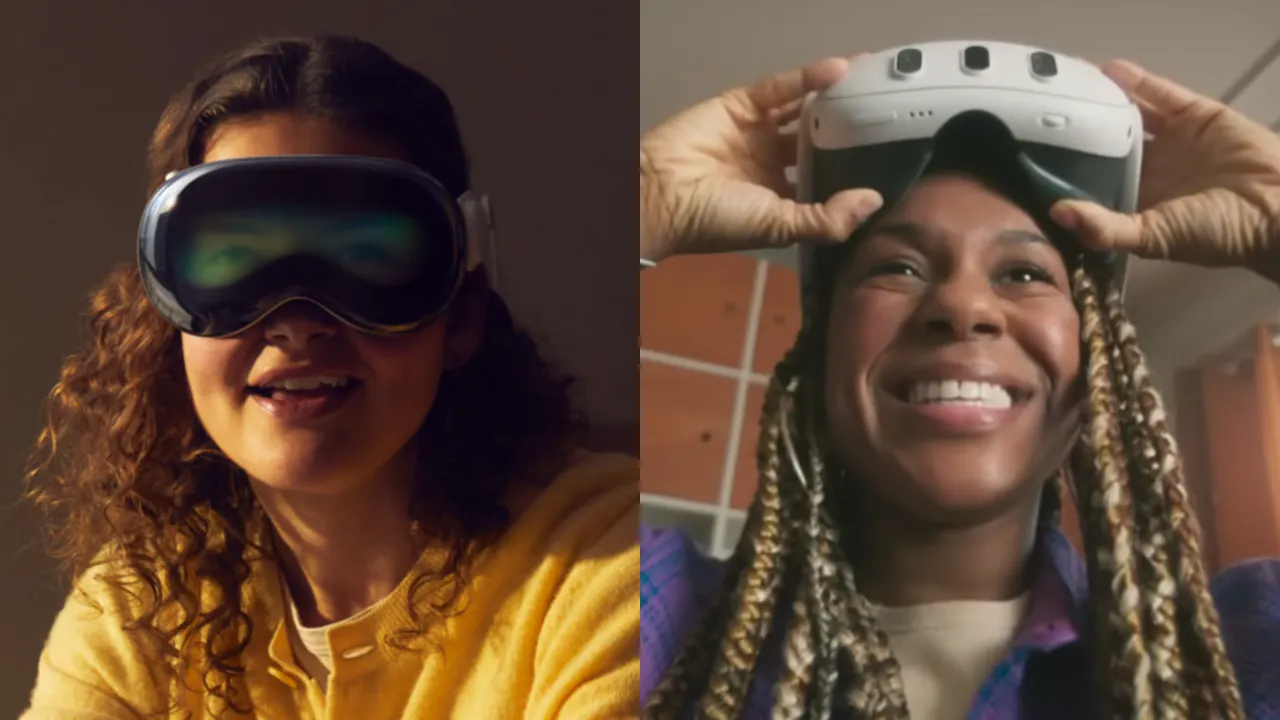It’s official: Apple is making its long-rumored headset, with the Vision Pro billed as an augmented reality (AR) device that is also capable of virtual reality (VR) experiences—a mixed reality headset. That puts Apple in direct competition with Facebook owner Meta, which effectively rules the VR/AR consumer headset space right now.
Meta got ahead of the news last week by announcing plans for a new Quest 3 headset later this year, which will offer up a similar blend of AR and VR smarts—and as we found out today, it will do so at a vastly lower price. But that’s not the only difference between the two.
We’re still waiting to see full specifications for both newly-revealed headsets, but there’s plenty we already know about the Apple Vision Pro and Meta Quest 3. Here’s how they stack up so far.
Price and availability
The Apple Vision Pro will sell for $3,499, which is even higher than the rumored $2,000-$3,000 price target. It’s a price point that will ensure that only tech-savvy early adopters jump in early, but that’s hardly an unusual approach for Apple.
Meta, on the other hand, is sticking to its consumer target for the main Quest line. The Quest 3 will start at $500, or one-seventh the price of the Vision Pro. Currently, the Quest 2 sells for just $300. The more powerful Quest Pro, perhaps a closer analog to the Vision Pro, currently sells for $1,000 after dropping from its $1,500 launch price last fall.
Apple will wait until early next year to roll out the Vision Pro, while Meta says it will debut the Quest 3 later this year.
Design and hardware
The Vision Pro looks very much in line with Apple’s existing design sensibility, with a build that looks like a curved iPhone that you strap to your face, paired with elements of the Apple Watch. It’s an appealing vision—and looks as expensive as it should, given the price.
Apple’s device is kitted out with all manner of cameras and sensors that not only enable passthrough functionality for augmented reality, but go a step further with an external screen that shows the eyes and expressions of the wearer from inside the device. That’s something we haven’t seen from previous VR and AR headsets.
It’s all controlled via finger and hand gestures along with voice commands—Apple is not including a controller or motion wand with the Vision Pro, based on what was shown today. However, Apple Arcade games can be played via a Bluetooth controller, and the headset supports the Magic Keyboard and Magic Trackpad for productivity needs.
Meanwhile, the Quest 3 is claimed to be 40% slimmer than the Quest 2, but it still appears to be a chunkier hunk of plastic compared to the sleek metal-and-glass Apple Vision Pro. It has external cameras and a depth sensor to enable full-color augmented reality passthrough, but does not have an external screen to showcase your face while wearing it. The Quest 2 did not offer full-color passthrough, which meant it couldn’t do mixed reality. The Quest 3 can.
And while the Quest platform supports finger and hand gestures, the Quest 3 also ships with a pair of upgraded motion controllers that are built for games and immersive apps. That may prove to be a key differentiator when it comes to content, as you’ll read below.
Display
The Apple Vision Pro’s twin internal displays provide a better-than-4K resolution image for each eye. That’s incredibly crisp. We don’t have an official spec yet, but Apple says that the screens collectively pack in over 23 million pixels, blasted straight to your eyeballs.
We don’t yet know how sharp the Quest 3 screen will be, but Meta says it’s crisper than the 1,832 x 1,920 image provided by the Quest 2. The Quest 2’s mark falls short of 4K resolution per eye, and a Bloomberg hands-on suggests that the Quest 3 doesn’t look significantly sharper than the Quest 2 in practice. But we’ll have to see how they directly compare.
Power and battery
The disparity between the Apple Vision Pro and Meta Quest 3 more or less comes down to the difference between a powerful computer and a powerful smartphone. That’s a likely sizable variance that will impact how lavish and immersive apps and games look and feel.
Apple is using its class-leading M2 processor from recent Macs to power the Vision Pro, paired with a new R1 chip that handles the data coming from cameras and sensors. Meanwhile, the Meta Quest 3 will reportedly use the Snapdragon Qualcomm XR2 chip—which is designed for these kinds of devices, but is derived from smartphone chips. Meta says you’ll get twice the graphics performance as the Quest 2, but it probably won’t match the Vision Pro.
The Vision Pro lacks an onboard battery, and instead has a plug-in pack that gives you about two hours of uptime, Apple claims. The pack can fit in your pocket or be next to you while seated. You can also use a wall plug for indefinite use.
We don’t know how long the Quest 3 lasts yet, but the Quest 2 serves up to three hours of use on a full charge, plus there’s a specialized Elite Strap available that doubles the uptime via an additional battery pack. Meta has yet to reveal how the Quest 3 compares on that front.
Software and content
Software is where we see another considerable difference. The Apple Reality Pro is being framed as a spatial computer for productivity and an entertainment device—but not a gaming destination. It’ll run existing Apple Arcade games on floating, flat screens, and will likely have new VR and AR games developed for it, but Apple has thus far skipped showing that stuff.
Meanwhile, the Meta Quest platform already has loads of immersive VR games, including great titles like Beat Saber, Resident Evil 4, Pistol Whip, and Superhot VR. Those games should only run even better on the Quest 3, but Meta has also showcased plans to develop AR games that work on the new headset.
By and large, they’ll do a lot of the same things. Both can be used as productivity devices for accessing apps and websites, and used to view movies and TV shows in virtual settings. But whereas the Apple Vision Pro plugs into the vast world of iOS apps and can connect with a Mac to access that content, Meta’s platform doesn’t have nearly as robust of a library of features.
Apple will provide access to an array of popular apps, including FaceTime and Zoom, and its 3D camera can create a “Persona”—a digital recreation of the wearer that reacts in real time based on how you do. That’s a big step towards immersion, and providing a seamless connection between your physical and digital selves. The 3D camera can also be used to shoot photos and videos with depth, which sounds like an impressive feature.
Verdict
It’s too early to draw any firm conclusions because we haven’t tried either headset, we don’t have a full list of specifications and features for both, and we can’t say for sure which apps and games will be available for each device’s launch.
That said, it’s already clear that these are two very different riffs on the same core concept. The Apple Reality Pro is bleeding-edge tech, bundling in all sorts of flashy tech features along with greater power, what appears to be a higher-resolution screen, and access to Apple’s vast software ecosystem. But it’s $3,499, which is a lot to ask of most consumers.
The Quest 3, on the other hand, costs one-seventh the price and appears to make meaningful upgrades over the strong Quest 2, including enabling AR games and packing in more power and a higher-resolution screen. It’s arguably more focused on consuming content than creating it, however, and is being billed as a gaming device more than Apple’s headset has thus far.
Price point alone may determine the choice for many prospective users, but otherwise, we should have a clearer sense of how these two headsets compare in the coming months. Stay tuned for more details as they come.

